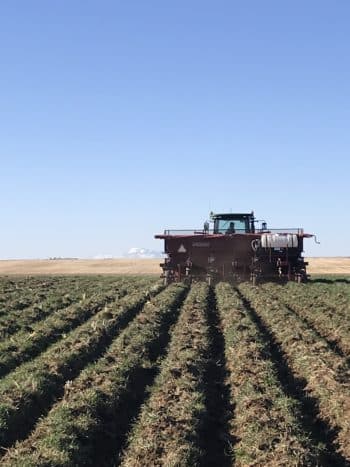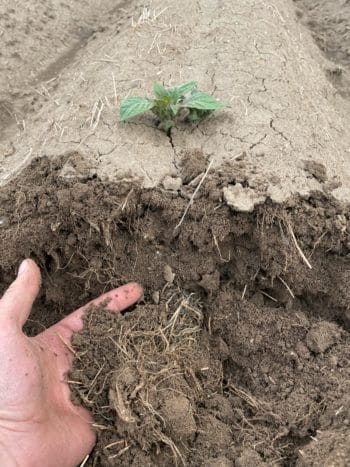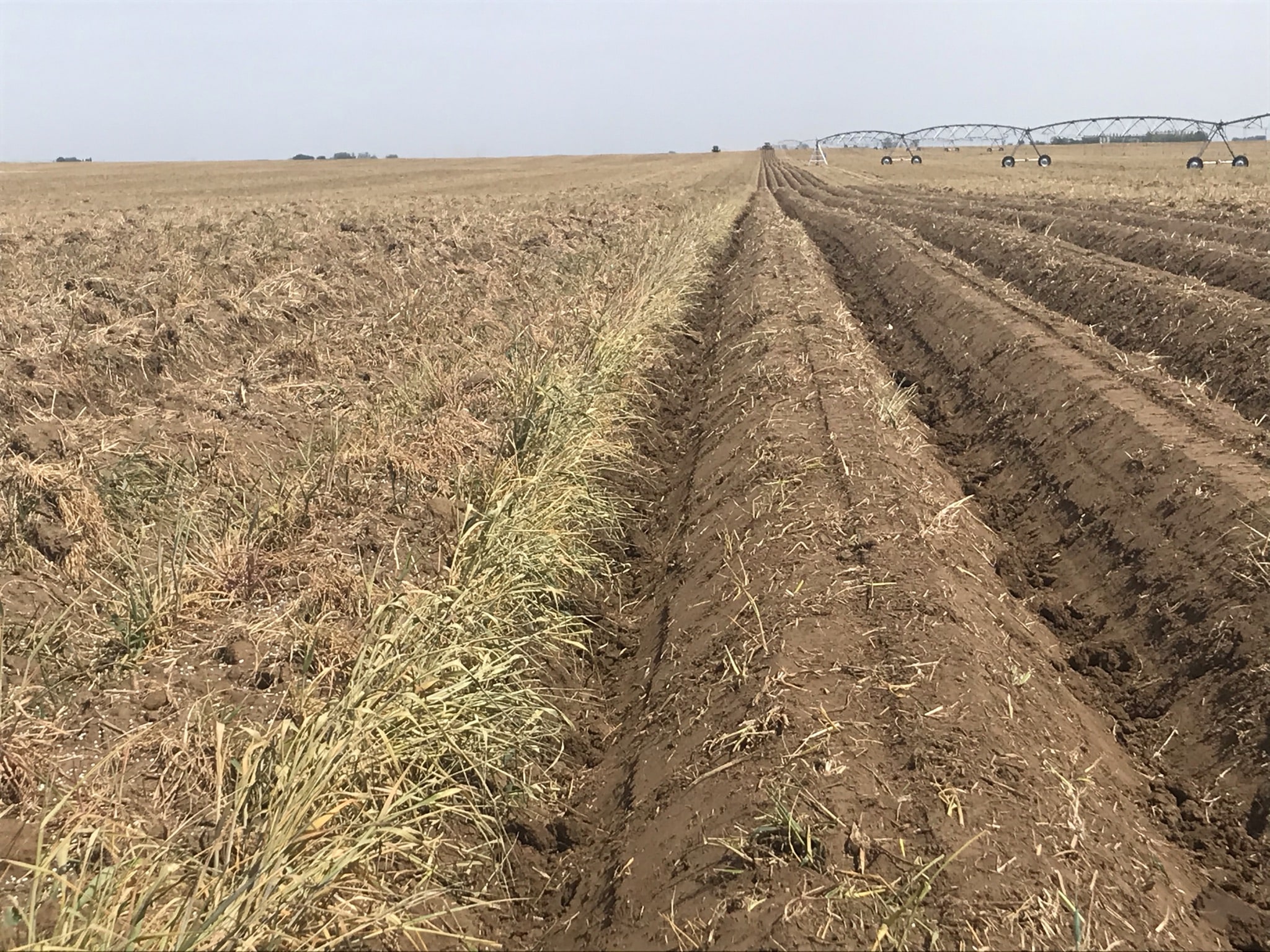Reducing soil erosion is the goal for Neil and James Bareman on their potato farm, Bar 9 Farms, in southern Alberta.
Farming in southern Alberta isn’t always easy. There are winds that are the strength of hurricanes, temperatures that bounce up and down, early fall frosts and winters without snow. The wild conditions can cause all sorts of problems but for farmers it means disappearing topsoil.

“It’s wind erosion, we have variable soil types here in the south,” Terence Hochstein, executive director of the Potato Growers of Alberta, explains in a phone interview. “We get the Chinook winds that blow through here numerous times during the winter. And if you don’t have good ground cover, then the soil starts to move.”
On Bar 9 Farms in Grassy Lake, Alta., brothers Neil and James Bareman are working hard to try to stop that erosion. The potato farmers have taken a mixed approach to stopping their soil from disappearing.
“I don’t think potatoes can be grown without some sort of tillage. Our focus is improving our soils, especially in the rotational years, and then really focusing on not having erosion during the potato growing year,” Neil says in a phone interview.
For them, the erosion control starts in their rotational years, the two run a six-year rotation which includes swapping fields with neighbours. Along with potatoes they grow hybrid canola, durum wheat and perennial grass seed, all of which they practice minimum or zero tillage on. When heading into a potato growing year on a field, they try to plant a cover crop — which doesn’t always happen depending on when the first frost hits.
For cover crops, the two usually plant a fall rye as they find it’s hardy against their winter conditions, providing a good cover come spring in April. If they get warmer temperatures in January and February, it will green up and continue to grow in low temperatures.
“This winter we had some pretty extreme winds in January and February. The late seeded cover crops in Alberta didn’t do anything because they were too small,” James explains in a phone interview. Neil adds that anything planted after Sept. 15 struggles to get established in time for winter.
They plan their harvest schedule based on which fields are most susceptible to erosion so that they can get cover crops planted on them in time.

One of the big changes they made on their farm was starting to grow perennial grasses for seed production a few years ago. The grass seed is first established under a cereal crop and then grows for a year before it’s harvested, it’s then usually grown for another year or two before it’s plowed under. The grass seed production helps to build their soil matter and water infiltration.
“That’s been a real benefit on our farm going into the grass seed production because it leaves the soil in really nice shape. Going into potatoes now after, there’s really good soil tilth after the grass seed production,” James explains.
The grass seed harvest schedule also works well for them as it’s harvested at the start of August before the other crops on the farm.
It isn’t easy though finding what works best for them to stop soil erosion and for the most part Neil says it’s been a lot of trial and error.
“When trying new things, you are going to have successes and failures. We all do need to be better,” he says. “We need to do better with holding that soil down in the early spring.”
Header Photo — A field on Bar 9 Farms in Grassy Lake, Alta. with a terminated fall rye cover crop terminated getting its final hilling pass and top dressing of fertilizer before being planted with potatoes. Photo: Bar 9 Farms
Sponsored by: 
Related Articles
McCain Releases Framework for Regen Ag Goals for Growers
The Benefits of Minimum Tillage for Potato Production
The Regenerative Ag Debate for Growing Potatoes, is it Possible?









